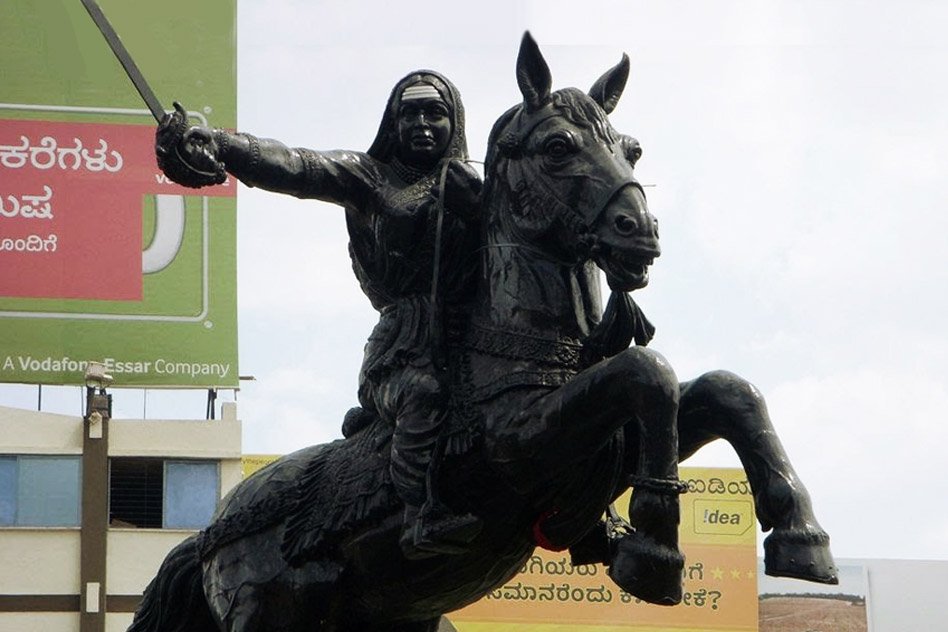
Rani Chennamma: Remembering The Unsung Icon From Karnataka On Her Death Anniversary
21 Feb 2017 12:50 PM GMT
If we have freedom today, we owe it to the people who fought for independence. Over the years, many battles have taken place, led by many heroes, which have changed the course of India’s history. One such hero was Rani Chennamma who is an epitome of courage and bravery.
Childhood on a Horseback
Chennamma was born in Kakati, a small village now in the district of Belagavi on October 23, 1778. Growing up, she learned sword fighting, horse riding and archery, and stories of her bravery spread across the town. At the age of 15, she got married to Mallasarja, the ruler of Kittur and thus began her journey to fight the British.
Demise of the King and thereafter
Chennamma’s husband Mallasarja Desai passed away in 1816 leaving her with a son and a state. Tragedy struck again when Chennamma’s son died in 1824. The queen was left with the state of Kittur with an uphill task to protect it from the Britishers. She single-handedly took on the might of the British. Rani Chennamma also adopted a son in 1824 and named him Shivalingappa and made him the heir to the throne. This also irked the East India Company who ordered to expel Shivalingappa on the pretext of Doctrine of Lapse. This Doctrine was based on the idea that if the ruler of an independent state died without an heir, then the right of the ruling will lapse to the sovereign, which was the British East India Company. Kittur came under the administration of Dharwad collectorate in charge of Mr Thackrey, but Rani Chennamma did not budge and gave her all to save the kingdom and its people.
Kittur v/s the British
Rani Chennamma left no stone unturned in saving the state from the clutches of the Britishers. She also sent a letter to the Governor of Bombay addressing the cause of Kittur who turned down the request. The Britishers attacked the state on 21 October 1824 with a huge army, but they were no match for Rani’s army and faced defeat.
The Britishers also lost collector Thackrey to Amatur Balappa, the Lieutenant in Chennamma’s army and two British officers were also taken in as hostages.
Rani struck a deal with Chaplin, the commissioner to terminate war in return for the release of the officers. The Britishers were not ready to let off the humiliation faced by them. They once again surrounded the state with bigger armies from Sholapur and Mysore. Rani Chennamma and her army fought valiantly and killed the sub-collector of Sholapur. This was short lived as the queen was betrayed by the traitors in her own army. Venkata Rao and Mallappa Rao mixed cow dung with gun powder while firing canons. The queen lost to the British, but she did not give up and fought with her close aide and renowned freedom fighter Sangoli Rayanna. Despite her valiant effort, she was captured and imprisoned at Bailhongal Fort for life.
Last days
Kittur Rani Chennamma devoted her time to reading holy texts while she was held captive. As time passed, she lost hope, and eventually, her health started deteriorating. She breathed her last on 21 February 1829 in the same Bailhongal Fort. Her sacrifice inspired Sangolli Rayanna, who continued to fight on her behalf but was subsequently hanged by the British. Rani’s adopted son was also taken into custody.
As a tribute, a statue was installed in Parliamentary Building premises at New Delhi in September 2007. Rani Chennamma was buried in Bailhongal taluk surrounded by a small park.
Today, the premises is in neglected state and poorly maintained by Government Agencies.
The Logical Indian honours and remembers one of the bravest Indian women. We hope that every citizen draws inspiration from her strength, valour, determination and sense of justice.
Also Read: A Woman To Remember: The Queen Of Jhansi, Rani Lakshmi Bai
 All section
All section













